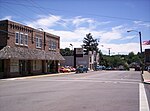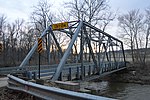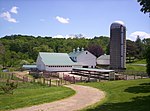Warren Rupp Observatory
Warren Rupp Observatory is an astronomical observatory owned and operated by Richland Astronomical Society. Built in 1985, it is located on the Friendly House Hidden Hollow Camp south of Mansfield, Ohio, United States. The telescope is one of the world's largest amateur operated telescopes. It has public observing nights on the first Saturday of every month, weather permitting. Warren Rupp Observatory holds public education and astronomy outreach programs regardless of weather conditions on all regularly scheduled public nights. Viewing through the 36-inch (910 mm) is only weather dependent and indoor facilities are available for programs. The Observatory is also the showpiece of the Hidden Hollow star party.
Excerpt from the Wikipedia article Warren Rupp Observatory (License: CC BY-SA 3.0, Authors).Warren Rupp Observatory
Tucker Road, Worthington Township
Geographical coordinates (GPS) Address Nearby Places Show on map
Geographical coordinates (GPS)
| Latitude | Longitude |
|---|---|
| N 40.6378 ° | E -82.4364 ° |
Address
Hidden Hollow Camp
Tucker Road
Worthington Township
Ohio, United States
Open on Google Maps









